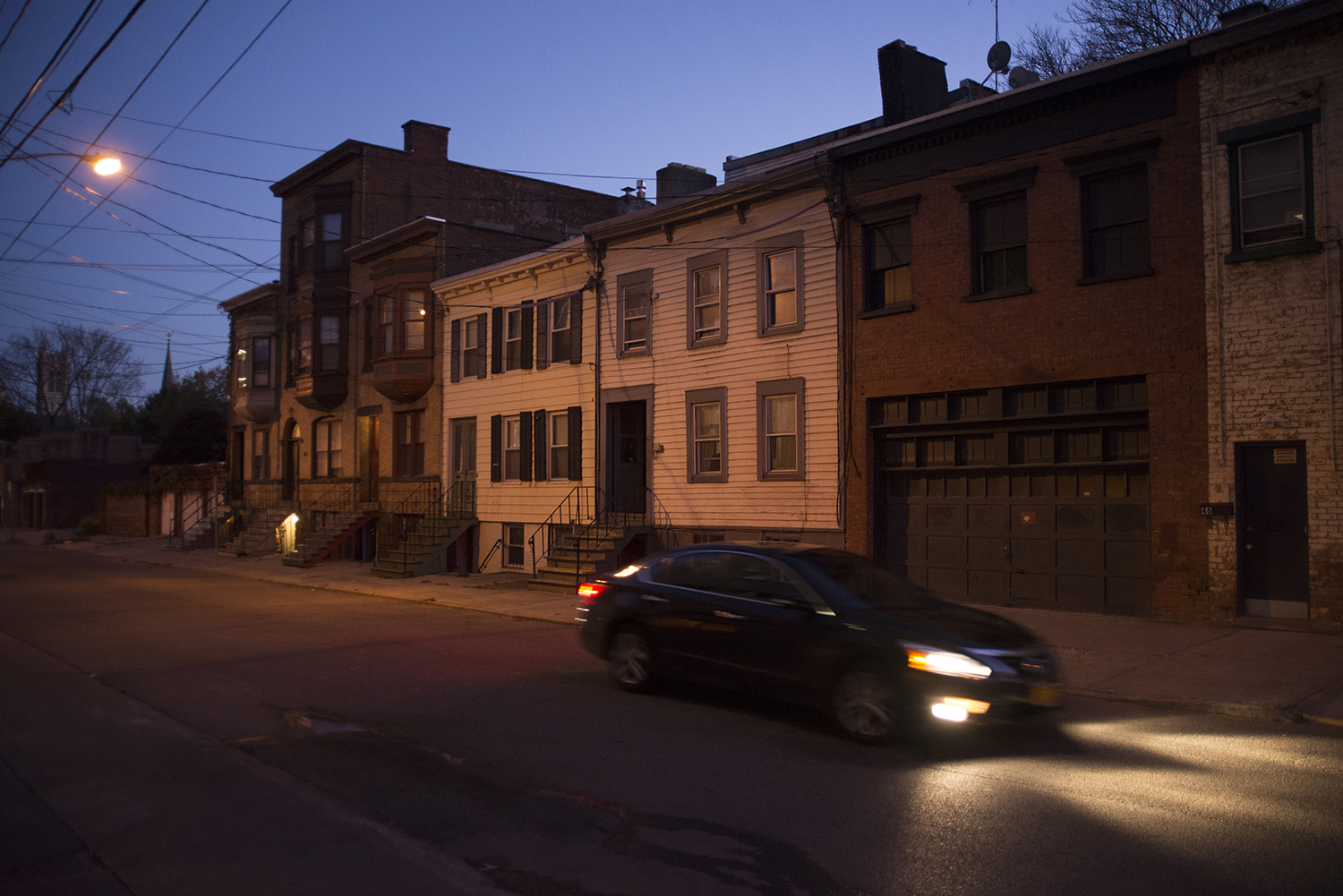Obama administration plans to resuscitate federal revitalization efforts for cities have found many a responsive ear, and for good reason. America’s cities and suburbs are caught in the deepest recession in more than a generation. But actually, the nation’s metropolitan areas already were in decline, even before the Great Recession took hold. And unlike previous trends, this slide was steepest in portions of the country that had led the way in economic growth.
Over the 1990s, more than 60 percent of central cities in the United States saw improvement in social and economic conditions, as measured by the Rockefeller Institute’s Intercity Hardship Index. That measure includes trends in unemployment, poverty, educational attainment, household income, proportion of the population that is too old or too young to work, and crowded housing. From 2000–2007, by contrast, central city hardship trends were dramatically more negative. The share of cities showing improvement was around 15 percent, roughly one-fourth what it was during the 1990s. Not surprisingly, during the same period, conditions worsened strongly in more than four in ten cities — a ratio nearly six times the proportion of the 1990s.
Trends at the metropolitan level are similarly downbeat. Fewer than three in ten (27.9 percent) large U.S. metro areas had worsening hardship conditions over the 1990s. But for 2000–2007, conditions worsened for nearly half these places. Only about one-in-five had improving levels of Metropolitan Hardship (our index comparing metro statistical areas) from 2000–2007 — a considerable decline from the 1990s, when over half (more than 53 percent) improved.
The principal national story is this decidedly negative turn in the condition of central cities and metro areas since 2000 — even before the hardening recession took hold in 2008. But large and surprising changes occurred at the regional level as well.
Cities with strongly worsening hardship from 2000–2007 were most common in the Midwest and the South, and comparatively rare in the Northeast. That was strikingly different from the 1990s. Then, hardship conditions in Northeastern cities were most intense and were growing worse more rapidly than other regions of the country, and cities in the South and Midwest typically fared far better. From 2000–2007, over three-quarters of the cities in the South had worsening hardship, compared to only one-third of those same cities from 1990–2000. Not a single city in the Northeast made the list of places that improved the most over the 1990s, but half of the top-ten cities from 2000–2007 are in the Northeast.
Similar changes are seen for metropolitan areas. Contrary to the Midwest’s positive trend over the 1990s, almost 90 percent of metro areas in the Midwest had increasing Metropolitan Hardship from 2000–2007. Increasing Metropolitan Hardship was found in 15 percent of Southern metro areas during the 1990s. Since 2000 that figure rose to over 48 percent.
Not all change was for the worse. In the West, the share of metro areas with rising hardship actually shrank, from 52.4 percent over the 1990s to 38.1 percent from 2000-2007. The Northeast fared even better. Conditions were stable or improved in 92.3 percent of Northeastern metro areas over 2000-2007 — a stark improvement from the 1990s, when Metropolitan Hardship worsened in over 60 percent of these places.
The most positive news seemed to come in Urban/Suburban Disparity — a measure of the degree to which a central city’s hardship conditions are worse than those for the rest of its metro area. Differences in city/suburb hardship conditions were stable or positive in almost 63 percent of the study areas from 2000–2007, but worsened in almost half of the study areas in the 1990s. But this only appears like an improvement: cities did not get better sufficiently to catch up with their suburbs, but rather suburbs experienced conditions of hardship more like those in their central cities.
Against this backdrop of extreme need, the Obama administration launched well-received initiatives linking new service strategies with housing development, providing incentives to spread the success of the poverty-fighting programs offered by the nonprofit Harlem Children’s Zone to other cities, and reports of some $20 billion for urban programs through the American Recovery and Reinvestment Act — the economic stimulus bill, as it is known. These announced investments were accompanied by signals that the Obama administration will strongly encourage federal agencies, as well as state and local governments, to coordinate efforts and work across distinctions of program boundaries or political geography.
We know that fragmentation contributes to worsening hardship — in central cities and for the metro areas overall. The more a metro area’s population lives within its central city, the more Intercity Hardship and Urban/Suburban Disparity scores decrease. But barriers between government programs and between layers of governments have tripped up many a prior federal effort to encourage community revitalization. Stronger connections between cities and their surrounding suburban areas are clearly needed; the distance forward from economic weakness is a long one, and one that cannot be traveled separately. Even where this is recognized, implementation challenges are enormous. As plans are made and executed to reinvest and to restore the American economy, time will tell if these are lessons learned and able to be overcome.
This commentary is drawn from Sliding to the Trough: Urban Hardship Trends Before the Great Recession.

